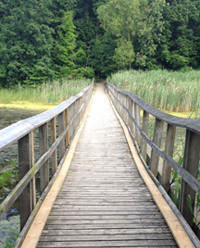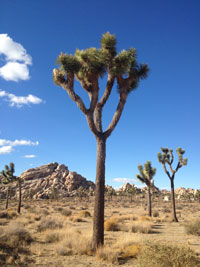
Cadillac Mountain North Ridge Trail, Acadia National Park, September 2016
“People have been drawn to the rugged coast of Maine throughout history. Awed by its beauty and diversity, early 20th-century visionaries donated the land that became Acadia National Park. The park is home to many plants and animals, and the tallest mountain on the U.S. Atlantic coast. Today visitors come to Acadia to hike granite peaks, bike historic carriage roads, or relax and enjoy the scenery.” (NPS, 2016)
In September, on the spur of the moment, we flew to Acadia National Park, located on the Mount Desert Island part of “Down East” Maine. Transported from Bangor International Airport by Woody, our witty and knowledgeable cab driver, we arrived shortly after midnight in Bar Harbor, a charming town that neighbors the park on “The Lobster Coast.”
On the first day, we rented bikes and caught the free shuttle at the central Village Green park, where we visited nearby restaurants, a brewery, coffee shop and an ice cream parlor as well a bookstore, theatre and a museum. Starting from Eagle Lake in the park, we biked 15 miles over the rustic carriage roads developed by John D. Rockefeller. On the ride, we witnessed horse-drawn carriages as we weaved over bridges and around the mountains and valleys to the Jordan Pond House, our half-way destination.

“The Bubbles” above Jordan Pond, Acadia National Park, September 2016
From the house, we hiked on the Jordan Pond Path through the forest to Jordan Pond Carry; one of Acadia’s oldest trails that traverses between Pemetic Mountain and the formations called “The Bubbles.” Our route took us to the South Bubbles summit (766-ft.) where Bubble Rock, a large boulder carried by glaciers, sits precariously on the edge of a cliff. Next we back tracked to the North Bubbles summit (872-ft.) before returning on the path to the west of the pond for our bike ride home.
On the second day, we visited the eastern and most popular side of the park. The NPS offered a car-free morning that made for a serene hike on the North Ridge trail to Cadillac Mt. (1522-ft.), named after the French explorer, and later founder of Detroit, Michigan, Antoine Laumet de La Mothe, Sieur de Cadillac. The trail ascended slowly through forest of spruce and pitch pine, gnarled trees, and wild blueberries with expansive northern views at the summit overlooking Bar Harbor, Frenchman Bay and the Atlantic Ocean.
Next we visited Sand Beach on the cool ocean waters before picking up the trail to The Bowl, a picturesque pond nestled between several peaks, including Champlain Mountain, Enoch Mountain, Halfway Mountain, and The Beehive. After nearly being run off the rocky trail by two young, and perhaps foolish runners, we headed past forests, blueberry bushes and remnants of a 1947 fire to the granite summit of Gorham Mountain that overlooks Newport Cove and Otter Cliffs along the coast. On the descent, we detoured at a plaque that marks the Cadillac Cliffs Trail and honors Waldron Bates, who built many trails at Acadia with stone stairs and iron rungs along granite ledges and cliffs.

Bar Harbor View & Cadillac Mountain Bar Island, Acadia National Park, September 2016
The end of the trail intersects with Park Loop Road and the Ocean Path trail, which we took north to Thunder Hole and Monument Cove, before a brief respite to soak in the extraordinary crashing waves and backtracking south to Otter Point and views of Cranberry Isles and Baker Island. Exhausted, but needing only two more miles to complete our yearlong national park journey, we flagged down the shuttle and returned to Bar Harbor for our final hike to Bar Island. We crossed the natural land bridge, accessible only during low tide on Frenchman Bay, passing several sea stars until reaching a footpath that climbs through the woods to the interior of the island and views of Bar Harbor and Cadillac Mountain in the distance – a fitting end to our centennial challenge.
The centennial of the National Park Service inspired us to explore 100 miles of trails in national parks. Along the way we met several amazing people who help to preserve and promote the natural beauty of the parks. We learned about the natives and the pioneers who lived on the natural and historical lands and the citizens and politicians who later protected them. From intimate views of wildflowers and wildlife to panoramic views of mountains and valleys and from gentle bikes ride on soft, crushed stone to a strenuous climbs over snow-covered granite rocks, we experienced an extraordinary journey of both natural and self-discovery. Thank you National Park Service and Happy 100th Birthday!

 aped by man-made and natural forces, the
aped by man-made and natural forces, the 
 In the 19th Century, the American
In the 19th Century, the American 
